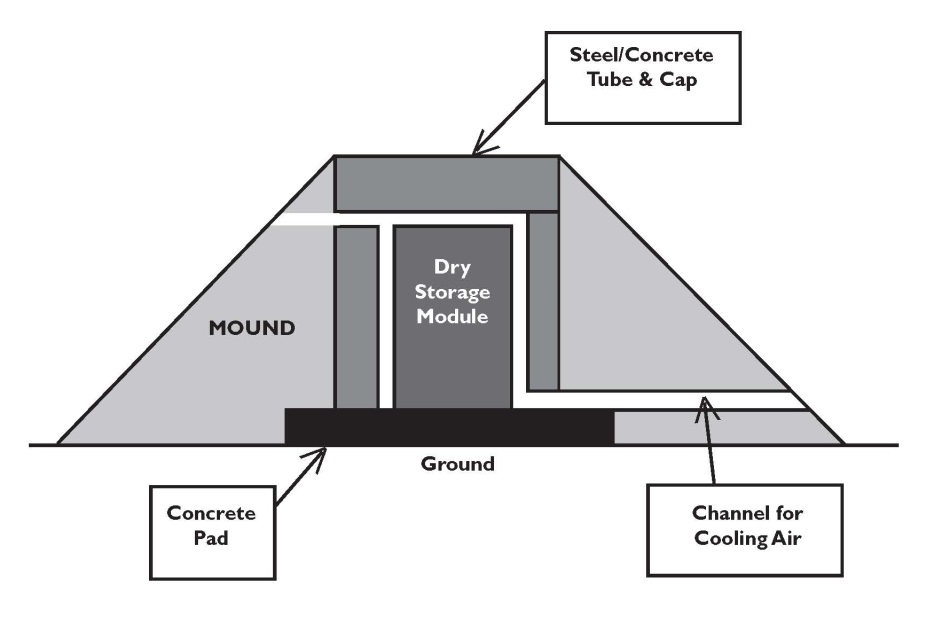Download information about decommissioning here
Vermont Yankee: Deliberate and Thorough Decommissioning Should Focus on Safety and Accountability
Vermont Citizens Action Network (VCAN) supports an interim cool down process for decommissioning the Vermont Yankee Nuclear Power Plant. The Nuclear Regulatory Commission (NRC) decommissioning regulations permit a wide range of approaches under the “SAFSTOR” method, including irresponsible approaches such as mothballing the plant for decades. VCAN supports the Planned Decommissioning and Site Remediation (PDSR) approach, which involves securing the site and allowing an interim cool down period to maximize safety and reduce radioactivity.
PDSR-SAFSTOR is a method that allows for a deliberate and thorough decommissioning that keeps the skilled and experienced workforce at the plant, allows for adequate planning and careful dismantlement, and focuses on safety and accountability.
PDSR-SAFSTOR can also decrease the cost of dismantlement and decommissioning. For example, the cool down process can significantly reduce the amount of waste that must be moved to a waste facility.
VCAN supports this PDSR slow and thorough process, and we note a few key requirements:
- The spent fuel must be moved out of the pool and into hardened, on-site storage as soon as possible.
- The skilled workforce that is specifically knowledgeable about and experienced with the Vermont Yankee plant must be retained for the PDSR planning and implementation (up to 60% of the workforce may be needed).
- The ultimate goal must be “greenfielding” the site – returning it to unrestricted use, both in terms of radioactivity and chemical contamination.
- A Community Advisory Board must be involved in the oversight of the decommissioning process.
PDSR-SAFSTOR Site Activities
1) Securing the Site & Preparing for Decommissioning
- Remove controls rods and fuel from reactor and store in fuel pool.
- Transfer spent fuel from fuel pool to hardened on-site storage.
- Begin clean up and removal of non-essential uncontaminated or minimally contaminated structures.
- Perform radiation survey of plant
- Begin site surveying of radioactive and chemical waste.
2) Interim Cool Down
- 24-hour security
- Continued clean up and removal of non-essential uncontaminated or minimally contaminated structures.
- General building maintenance
- Routine radiological inspections
- Site environmental and radiation monitoring program
- Develop Decontamination and Dismantlement Plan
3) Implement Decontamination and Dismantlement Plan
4) Site Restoration to Unrestricted Use
- Radioactivity below 10 mrem
- Chemical contamination cleaned up
5) Waste Monitoring Operations
Rancho Seco as a Model
The Sacramento Municipal Utility District (SMUD) closed the Rancho Seco Nuclear Generating Station in June 1989, after 14 years of operation. SMUD retained a majority of the workforce during a PDSR-SAFSTOR process, and incremental dismantlement began in 1997, after an interim cool down period that also allowed funds to accumulate for this process. Except for 11 acres, the site was returned to unrestricted use in 2009. Waste continues to be monitored on-site in dry cask storage, with continuous security. SMUD has committed to renewable energy, and reports that as of 2010, it supplied 24% of its energy from renewable energy sources.
Initial Activities:
- VY submits written certification of permanent cessation of operations to NRC
- VY submit Post-Shutdown Decommissioning Activities Report (PSDAR) to NRC
- NRC makes PSDAR public for review and comment
Major Decommissioning Activities:
- Removal of major components
- Must facilitate release of site for unrestricted use
- Must prevent significant environmental impacts that have not been reviewed
License Termination Activities:
- VY must submit a License Termination Plan (LTP) to NRC within 2 years of expected license termination.
- Site must be returned to unrestricted use.
Safe and Secure: Hardened On-Site Storage of Spent Nuclear Fuel
One of the most dangerous components of any nuclear power plant is the accumulation of high-level radioactive waste. At the Vermont Yankee site, this waste is currently stored in a spent fuel pool, located seven stories above the ground. Keeping high-level waste safe and secure is critical, as a fuel fire can burn uncontrollably and render thousands of square miles of land completely uninhabitable for decades. The Vermont Citizens Action Network (VCAN) urges the state of Vermont to do everything it can to require Vermont Yankee to move the waste out of the fuel pool and into hardened, on-site storage as quickly as possible.
Fuel Pools are Vulnerable
- The Spent Fuel Pool is not structurally protected and is vulnerable to an attack.
- The pool is located seven stories above ground.
- Without constant monitoring and maintenance, the pool could be compromised.
- More than 1000 times the radiation released in a Hiroshima-type bomb is stored in the fuel pool.
- Fuel fires cannot be put out.
What Does Hardened On-Site Storage Look Like?

- Keeps high-level radioactive waste safe and secure.
- Allows waste to be stored on site while a national solution is developed.
- Uses skilled workforce who are familiar with the plant to transfer waste to on-site casks.











